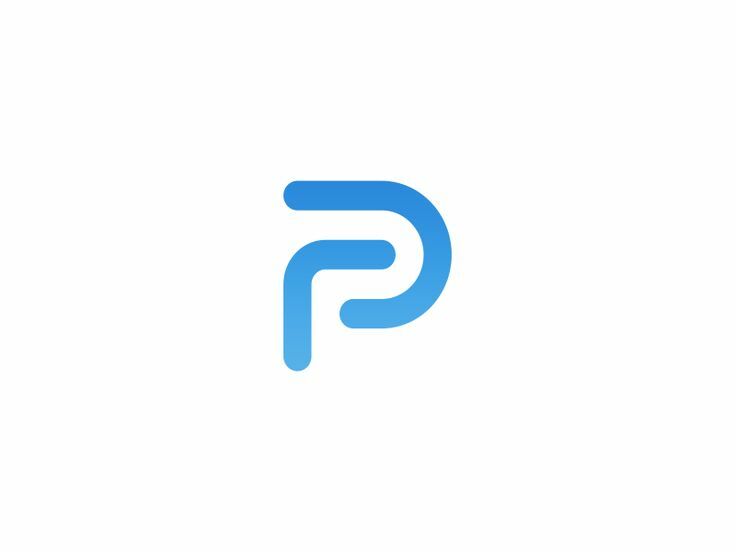What Is Web Design Software?
Web design software is a computer tool that enables you to develop and design websites without requiring considerable coding experience. This type of software has a user-friendly interface and a variety of tools and functions to help you create a professional-looking website. One of the primary advantages of using web design software is its ease of use, making it appropriate for both novices and experts.
Pre-made templates, drag-and-drop design elements, and configurable themes allow you to easily develop a website that meets your exact requirements and reflects your brand's identity. Furthermore, web design software has a plethora of tools that enable you to add numerous functional components to your website, such as forms, galleries, e-commerce capabilities, and so on.
This guarantees that your website is not only visually stunning, but also runs smoothly for your visitors. Another important feature of web design software is its interoperability with various devices and screen sizes. With the growing use of mobile devices, having an adaptable website is critical. Web design software allows you to construct a website that automatically modifies its appearance and information based on the device being used, resulting in a more seamless user experience.
Finally, web design software gives you complete control over the design of your website, allowing you to make changes and updates as needed without the assistance of a web developer. This not only saves time and money, but also allows you to maintain your website current and relevant. Overall, investing in decent web design software is critical for establishing a strong online presence for your business or personal needs. Web design software, with its user-friendly interface, adjustable features, and responsive design, provides an all-in-one solution for building a professional and effective website.
What Are The Recent Trends In Web Design Software?
Web design software has evolved significantly in recent years, keeping pace with the ever-changing technological landscape and customer preferences.
As a buyer, it is critical to stay current on the latest developments in web design software so that you can make an informed decision about which software to invest in for your company.
1. The Rise Of AI And Automation: One of the most prominent trends in web design software is the use of artificial intelligence (AI) and automation. This technology enables speedier and more efficient design processes, freeing designers' time to focus on more creative and high-level projects. AI allows for the automation of processes such as image resizing, layout tweaks, and color palette suggestions, resulting in a more streamlined and efficient design process.
2. Mobile First Design: With an increasing number of consumers accessing websites via mobile devices, web design software is responding to this trend by prioritizing mobile-first design. This strategy prioritizes mobile design, ensuring that the website is suitable for smaller screens and touch navigation. Some software even allows designers to preview and test designs on many devices, making it easier to develop a consistent user experience across platforms.
3. Implementation Of Responsive Design: Responsive design, which allows websites to adjust to multiple screen sizes and resolutions, has become an essential component of online design. Software now includes elements that enable for the simple production of responsive designs, removing the need for manual coding. This not only saves time, but also ensures that the website looks well on all devices.
4. Drag-And-Drop Functionality: Another recent trend in web design software is the greater use of drag-and-drop capabilities. This capability allows designers to simply move components across the page without requiring sophisticated coding. It is a simple and effective way to construct websites, making it accessible to those with no coding skills.
5. Integration With Collaboration Tools: As remote work becomes more common, web design software incorporates collaboration elements to aid teamwork. These tools support real-time collaboration, making it easier for numerous designers to work on the same project. This not only boosts productivity, but also results in a more coherent and uniform design.
Benefits Of Using Web Design Software
Web design software, often known as a website builder or web development tool, is a software application that allows users to construct, design, and administer websites without the need for coding or sophisticated technical knowledge.
Let's look at the different advantages of using web design software and how it can help businesses, people, and organizations establish a professional and impressive online presence.
1. User-Friendly Interface: One of the most significant benefits of using web design software is its intuitive and user-friendly interface, which allows beginners to construct websites without prior technical knowledge. These programs provide drag-and-drop capabilities, pre-designed templates, and a multitude of adjustable choices, making website creation straightforward and easy.
2. Saves Time and Effort: Web design software allows users to construct websites in hours, but building one from scratch might take days or even weeks. The program simplifies the entire process by eliminating the need for coding and design expertise, saving time and effort for both enterprises and people.
3. Budget-Friendly: Hiring a professional web designer may be costly, particularly for small enterprises and startups. Web design software makes it possible to create a website without paying a web designer. This makes it an affordable option for organizations and people seeking to develop an online presence without breaking the bank.
4. configurable Templates: Most web design software has a variety of configurable templates tailored to different industries and business kinds. Users may easily select a template that meets their requirements and alter it to reflect their brand, saving them the time and work of creating a website from scratch.
5. Mobile Responsiveness: In this digital age, having a mobile-friendly website is critical for businesses. Web design software provides responsive templates, which ensure that the website looks and performs properly on all devices, including desktops, laptops, tablets, and smartphones.
6. SEO-friendly: Search engine optimization (SEO) is critical for improving a website's visibility and ranking in search results. Web design software includes built-in SEO elements and interfaces with SEO tools, making it easier for users to optimize their websites for search engines and increase organic traffic.
7. Regular Updates: Web design software vendors make updates on a regular basis to improve performance, increase security, and introduce new features. These updates are typically included with the subscription, ensuring that the website is always up to date and using the most recent technology.
Important Factors To Consider While Purchasing Web Design Software?
As technology advances, having a visually beautiful and user-friendly website has become a must for any business or brand. And, with so many web design software options available, selecting the best one for your needs can be difficult.
To make an informed decision, here are some crucial elements to consider when selecting web design software:
1. Type Of Software: Before delving into the specifics of any web design software, you must first establish what type of software you require. There are three main forms of web design software: online, offline, and hybrid. Online software is cloud-based and accessible from any location with an internet connection, but offline software is downloaded to your computer and can be used offline. Hybrid software combines the advantages of online and offline solutions. Consider your individual requirements and select accordingly.
2. Features And Functionality: Web design software has several features and functionalities. Make sure to examine your requirements and explore the various possibilities to ensure that the software you choose has all of the functionality you desire. Drag & drop interface, template library, configurable themes, flexible design, and SEO tools are some of the most important aspects to consider.
3. User Experience: As a web designer, the software you use should make your job easier and more efficient. As a result, it's critical to examine the user experience provided by a specific software. Is the user interface intuitive? Is it easy to use? Is it necessary to know how to code? These are some questions to consider while evaluating the user experience of various web design software.
4. Operating System Compatibility: Whether you use Windows, MacOS, or Linux, make sure the web design software you choose is compatible with your system. It is best to check whether the software requires any additional plug-ins or third-party applications to function properly on your system.
5. Pricing And Budget: Web design software is available at a variety of price ranges, including free, subscription-based, and one-time purchase alternatives. Consider your budget and select software that has the proper combination of features, usefulness, and pricing. Some alternatives also provide free trials, allowing you to test the product before committing to a purchase.
6. Customer Support: Technical issues can occur at any time, so having dependable customer service is critical for a smooth user experience. Before acquiring web design software, examine the company's customer care alternatives. Do they provide help via a variety of channels, including live chat, email, and phone? Are there any additional fees for technical support?
What Are The Key Features To Look For In Web Design Software?
When looking for the best web design software, you should emphasize a few essential aspects.
These capabilities will not only allow you to develop a visually stunning website, but will also improve the design process's efficiency and usability.
1. User-Friendly Interface: Before anything else, look for web design software with an easy-to-use interface. This means that the software should have a well-organized interface, conveniently accessible features and menus, and a simple navigation method. A user-friendly interface not only saves time, but also makes the design process more pleasurable and less stressful.
2. Adaptable Design: In today's digital world, an adaptable website is essential. This means that your website should be responsive to various screen sizes, whether visited on a desktop, tablet, or mobile device. Look for web design software that includes responsive design options, so you can develop a website that looks fantastic on any device.
3. Customization Possibilities: In order to differentiate your website from the competition, your web design software should include customization possibilities. These may feature changeable templates, fonts, colors, and layouts. This enables you to design a website that reflects your brand's distinct personality and style.
4. Drag-And-Drop Functionality: The days of building a website from scratch are over. Look for web design software that has drag-and-drop capabilities, allowing you to simply add and change pieces on your website without requiring any coding skills. This will save you time and work while providing you the freedom to create your website the way you want it.
5. Cross-Browser Compatibility: Your website should appear fantastic on a variety of devices and web browsers. Make sure the web design software you use is compatible with common browsers such as Google Chrome, Safari, Firefox, and Internet Explorer. This ensures that your website seems uniform and performs properly across all browsers.
6. SEO (Search Engine Optimization) Tools: Having a visually beautiful website is crucial, but so is ensuring that it is search engine optimized. Look for web design software with built-in SEO features like keyword optimization, meta tags, and site map building. This will increase your website's visibility and ranking in search engine results pages.
Why Do Businesses Need Web Design Software?
In today's digital world, a strong online presence is essential for organizations of all sizes. A well-designed website not only attracts potential clients, but also helps to establish trust and credibility with them. Here is when site design software comes in handy. First and foremost, web design software gives businesses the tools and templates they need to develop a professional, visually appealing website.
Businesses with no prior coding experience may quickly adjust layouts, add images and videos, and develop a user-friendly interface that represents their brand's identity. Another major feature of web design software is the ability to optimize websites for desktop and mobile devices. With the bulk of internet browsing now taking place on mobile devices, having a flexible website is critical for businesses to reach their target audience.
Web design software simplifies the process of ensuring that a website appears and operates well on every device, providing clients with a seamless experience. Furthermore, web design software frequently includes built-in SEO capabilities to help businesses boost their website's search engine rating. Businesses can improve their internet exposure and organic traffic by following best practices and applying relevant keywords.
Furthermore, site design software facilitates integration with other critical tools like as social networking, email marketing, and e-commerce platforms. This allows firms to maintain a consistent web presence and streamline their marketing efforts. Web design software appeals to businesses because of its convenience and low cost. Businesses who have complete control over their website and do not have to rely on pricey professional web designers can save time and money while maintaining a high-quality website.
How Much Time Is Required To Implement Web Design Software?
The time required to deploy web design software varies depending on a number of factors, including the project's complexity, the user's skill level, and the capabilities contained in the chosen program. A basic website's design and layout might take anywhere from a few hours to a couple of days to construct using web design software.
However, for more sophisticated projects that require extensive functionality and customization, implementation can take many weeks or even months. It also relies on the user's familiarity with the software and whether they use pre-made templates or start from scratch. Some web design software includes ready-to-use templates and drag-and-drop features, making the process faster and simpler.
However, if the customer wishes to develop a unique and original design, it may take longer to accomplish because it requires creating and coding pieces from scratch. Furthermore, the time required is determined by the number of modifications and changes requested throughout the design process. To avoid delays and excessive time consumption, ensure that the intended design is finalized before proceeding to the development process.
What Is The Level Of Customization Available In Web Design Software?
Web design software is an essential tool for building visually appealing and effective websites. When shopping for web design software, one crucial element to consider is the level of customization available. Customization is essential for establishing a unique and personalized website that suits your individual needs, brand image, and target audience.
The level of customization possible in web design software varies according to the program you use. Some web design software includes a drag-and-drop interface that lets you effortlessly edit items like text, graphics, and layouts without having to code. This software is ideal for novices and individuals with little to no coding knowledge.
More modern web design software includes a wide range of customization options, allowing competent designers to construct complex and dynamic websites. These programs enable access to the source code, allowing designers to have complete control over the design of their websites. This level of customisation is best suited for those who know how to code and demands a higher level of competence.
Furthermore, many web design products include templates and themes that can be tailored to your brand's style. These pre-made templates are an excellent starting point for website creation and can save you time and work. Depending on the software, they may limit the number of customization options. In addition to design elements, web design software allows for modification of a website's functionality.
Some applications have a variety of plugins and connectors, allowing you to add sophisticated features to your website, such as forms, e-commerce, and social media feeds. This level of flexibility is essential for anyone wishing to construct a fully working and dynamic website. Before investing in web design software, you should consider your needs and desired amount of customisation.
Consider your technical skills and the complexity of your website to determine which program is ideal for you. It's also worth mentioning that some software has a free trial period, allowing you to evaluate the customizing options before making a purchase.
Which Industries Can Benefit The Most From Web Design Software?
Web design software is a strong tool that can benefit firms from a variety of industries. Whether you own a little business or a major enterprise, web design software may help you improve your online presence and generate more leads and sales.
We'll look at which sectors can benefit the most from web design software and how it can meet their specific requirements.
1. E-commerce: In today's digital age, e-commerce enterprises must establish a strong online presence. Web design software enables online retailers to develop visually appealing and user-friendly websites that entice and engage customers. Web design software can help e-commerce enterprises increase sales and establish client trust by providing features such as extensive product galleries, secure payment choices, and easy navigation.
2. Hospitality: Effective web design is critical to the success of the hospitality industry. Whether you run a hotel, restaurant, or travel agency, having an appealing and functional website is critical. Web design software can assist you in promoting your services, creating simple booking systems, and integrating with social media to attract more people. It also enables for the building of responsive websites, which provide a consistent user experience across all devices.
3. Creative/Artistic Sectors: Web design software transforms the creative and artistic sectors, including graphic design, photography, and interior design. These industries demand visually appealing websites to highlight their work and attract customers. Web design software allows designers and artists to effortlessly construct portfolios, galleries, and interactive components to exhibit their distinctive talents and stand out in a competitive market.
4. Education: Web design software has the potential to dramatically help the education industry. Web design tools may help educational organizations like schools, colleges, and online learning platforms construct engaging and user-friendly websites for students and teachers. Web design software, with features such as online course catalogs, student portals, and virtual classrooms, can improve the learning experience and increase access to education.
5. Non-Profits: Non-profit organizations can also benefit from site design tools. These organizations rely largely on donations and must attract and engage donors via their websites. Non-profits can use web design tools to develop engaging contribution pages, visually appealing campaigns, and simple methods for supporters to get involved, making it an effective tool for garnering awareness and revenue.
Conclusion
In conclusion, selecting the correct web design software can have a significant impact on the success of your website. Before making a decision, you should analyze your individual requirements as well as the characteristics provided by each product. According to our study and analysis, firms like as Adobe, Wix, and Squarespace provide comprehensive options for both new and expert designers.
Consider your budget, design capabilities, and scalability before making a decision. Remember that investing in high-quality web design software will save you time and work in the long run, resulting in a more professional and effective website. We hope this buyer's guide has offered useful information and guided you to the best web design software for your individual requirements. Happy designing!






















